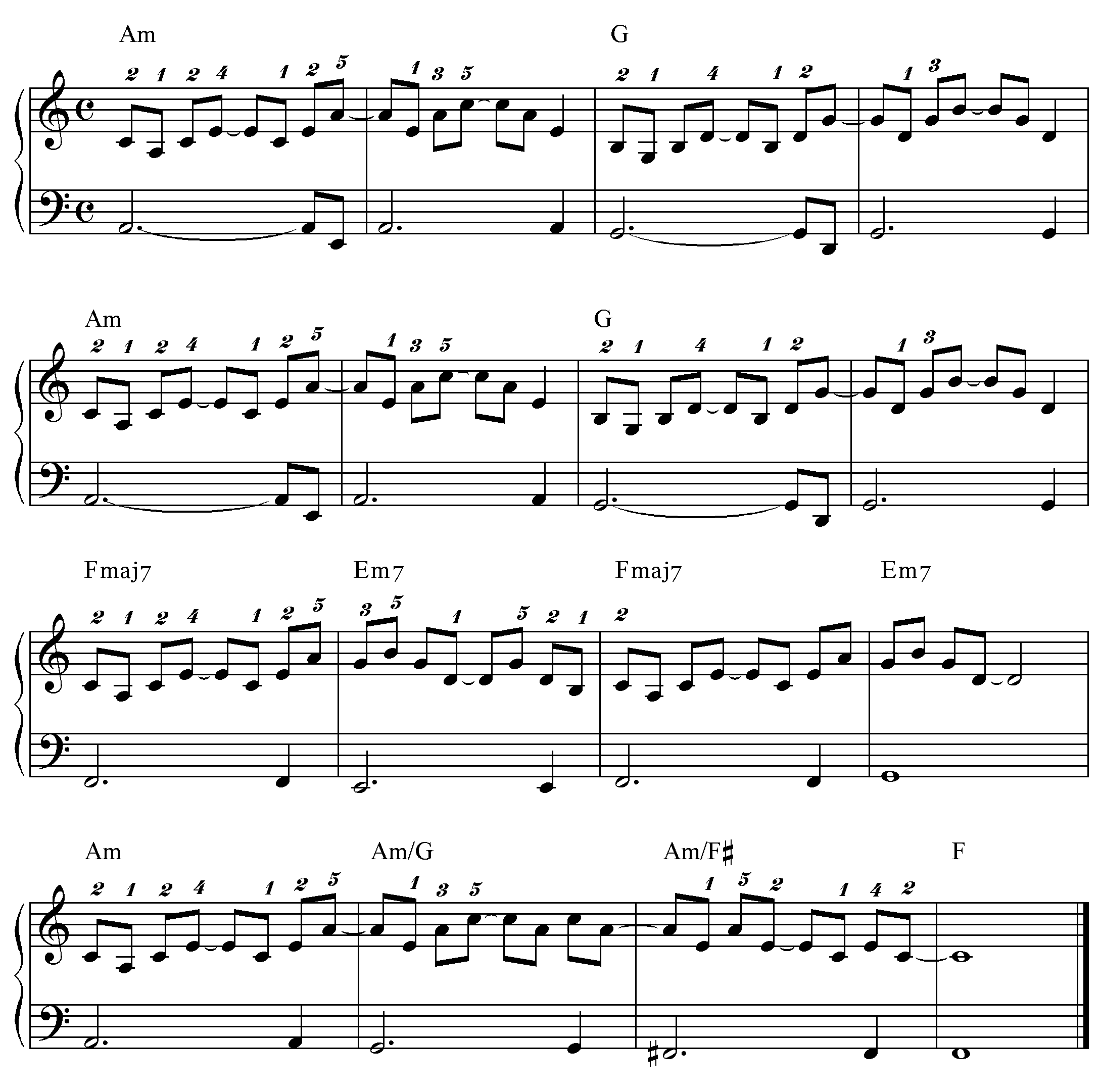Patreon CHORDS 101 Series
Broken Chord Patterns
- Page Five -
The pair of chords we used in the last three modules - D minor, with C major a whole tone below - have a direct parallel a fourth below, with A minor and G major a whole tone below, so we can use our broken material in a different key without much difficulty.
But we're going to change the rhythm anyway - into four-four. So we need to make at least one of our three triad chord-tones longer to fill the four-quaver groups.
This in turn leads to some syncopation, which we practice in this module using counting and together-left-right (TLR) analysis.
You should have studied the Finding Inversions modules and the first two Broken Chords pages before tackling this module.
The module riff
Remind yourself of the module riff. Perhaps you can 'get the rest' by ear.
If not, go onto the detailed teaching of Parts Two and Three. (Breaking it down and talking about it methodically will improve your creativity anyway!)

Part Two
Work through this video to get some basic four-four broken chord patterns here's the 'skeleton music' - just the chords and bass - for the next phrase, followed by the teaching video.

Here's the chords-with-BMT illustration.

Here's the 'actual music', with the BMT spelled out and TLR and count for detailed study.

Part Three
Here are the music and teaching video for the last line.
Up and down the broken-chord minor triad inversions over a descending bass line - you'll hear that construction everywhere once you've worked through it once.

The whole riff
Here's the whole riff at performance speed again. If you can't play it through, make a critical analysis of what's tripping you up - finding the inversions, fingering, rhythm, TLR syncopation? - and work through the build-up videos until you can tick the riff off as DONE!

Hope you're enjoying studying with Musicarta! Come back soon!
|
OUT NOW! |
THE MUSICARTA BEAT & RHYTHM WORKBOOK At last! An effective approach to keyboard rhythm & syncopation skills. Learn more! |
ONLY $24.95! |
PATREON |
The MusicartaA methodical approach to keyboard syncopation for
|
PUBLICATIONS
exciting keyboard
creativity courses
CHORDS 101
WORKBOOK

~HANON~
video course

Musicarta
Patreon
PENTATONICS
WORKBOOK
video course

Creative Keyboard
video course

BEAT AND RHYTHM
WORKBOOK

- Volume 1 -

12-BAR PIANO
STYLES WORKBOOK

MUSICARTA MODES
WORKBOOK

PIANO STYLE

CANON PROJECT
video course

VARIATIONS
video course


- Piano Solo -
video course

- Piano Solo -


YouTube playlists